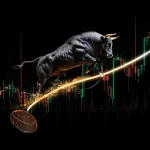Optimization Bias: How to Identify and Benefit from This Common Bias
Sept 24, 2024
The Siren Song of Perfect Strategies
The allure of a perfect strategy is strong in the world of investing. Investors often fall prey to optimization bias, a cognitive trap that leads them to fine-tune their approaches based on past data, believing this will guarantee future success. This bias can be particularly dangerous, as it fosters overconfidence and sets the stage for significant losses when market conditions inevitably shift.
Warren Buffett, one of history’s most successful investors, famously said, “The stock market is a device for transferring money from the impatient to the patient.” This wisdom highlights the folly of chasing perfection in a system as complex and unpredictable as the financial markets. Optimization bias tricks investors into thinking they can outsmart the market through meticulous analysis of historical data when, in reality, they may be setting themselves up for failure.
The danger lies in the false sense of security gained from back-testing strategies against past market conditions. While this approach can yield impressive results on paper, it often falls short when applied to real-time trading. The market is a living, breathing entity that constantly evolves and reacts to new information. What worked yesterday may not work tomorrow, and investors who cling too tightly to optimized strategies risk being blindsided by unexpected market shifts.
Understanding Mass Psychology in Trading
To combat optimization bias, investors must first understand the role of mass psychology in market movements. The legendary trader Jesse Livermore recognized this early in his career: “The market is never wrong – opinions often are.” This insight underscores the importance of understanding crowd behaviour rather than relying solely on individual analysis.
Mass psychology in trading refers to market participants’ collective emotions and behaviours. Fear, greed, and a herd mentality can drive prices to extremes, creating opportunities for savvy investors who recognize these patterns. By studying market sentiment and investor behaviour, traders can gain a valuable edge over those focusing exclusively on technical indicators or fundamental analysis.
One key aspect of mass psychology is the concept of market cycles. These cycles are driven by shifts in collective sentiment, ranging from optimism to euphoria, then fear and despair, before starting anew. Recognizing where the market is in this cycle can help investors make more informed decisions about when to enter or exit positions.
George Soros, known for his theory of reflexivity in financial markets, emphasized the importance of understanding these psychological factors. He argued that investor perceptions can influence market fundamentals, creating a feedback loop that amplifies trends. By recognizing these patterns, investors can position themselves to profit from the crowd’s irrational exuberance or unwarranted pessimism.
The Power of Technical Analysis
While understanding mass psychology is crucial, it’s not the only tool at an investor’s disposal. When used judiciously, technical analysis can provide valuable insights into market trends and potential turning points. However, it’s essential to approach technical analysis with a flexible mindset rather than seeking to optimize indicators to perfection.
John Bollinger, creator of the Bollinger Bands indicator, emphasized this: “Technical analysis is the study of data generated by the market and the actions of people in the market.” This definition highlights the human element behind price movements, reminding us that charts and indicators reflect collective behaviour rather than crystal balls that predict the future.
Key technical analysis concepts like support and resistance levels, trend lines, and moving averages can help investors identify potential entry and exit points. However, these tools should be used in conjunction with an understanding of market psychology rather than in isolation. The most successful traders recognize that technical signals are most potent when they align with shifts in market sentiment.
For example, a stock approaching a long-term resistance level may be more likely to break through if there’s a surge in positive sentiment around the company or sector. Conversely, a seemingly strong uptrend may be more vulnerable to reversal if signs of investor euphoria are present. By combining technical analysis with insights from mass psychology, investors can make more nuanced and compelling trading decisions.
Combining Psychology and Technical Analysis
The real power in trading comes from integrating psychological insights with technical analysis. This approach allows investors to move beyond the limitations of optimization bias and develop more robust, adaptive strategies. Benjamin Graham, often called the father of value investing, recognized the importance of this balance when he said, “The investor’s chief problem – and even his worst enemy – is likely to be himself.”
One effective way to combine these elements is through contrarian indicators. These tools, such as the VIX (fear index) or put-call ratios, provide insights into market sentiment that can be cross-referenced with technical signals. For instance, extreme readings on the VIX combined with oversold conditions on technical indicators might signal a potential market bottom.
Another powerful technique is volume analysis in conjunction with price action and sentiment indicators. Unusual volume spikes can indicate shifts in mass psychology, particularly when they coincide with breakouts from critical technical levels. By paying attention to these confluences, investors can identify high-probability trade setups that align with technical and psychological factors.
Paul Tudor Jones, a legendary hedge fund manager, exemplifies this approach. He combines rigorous technical analysis with a keen understanding of market psychology. He famously stated, “The secret to success from a trading perspective is an indefatigable, undying, and unquenchable thirst for information and knowledge.” This hunger for understanding the market’s technical and psychological aspects has been key to his long-term success.
Real-World Success Stories
Numerous real-world examples demonstrate the effectiveness of combining mass psychology with technical analysis. One striking case is the dot-com bubble of the late 1990s. While many investors were caught up in the euphoria, those who paid attention to both technical signals and sentiment indicators profited from the boom and avoided the subsequent crash.
As the Nasdaq approached its peak in early 2000, several warning signs emerged. Technically, the index had become highly overbought, with prices far above long-term moving averages. Simultaneously, sentiment indicators showed extreme optimism, with record-high margin debt and a proliferation of day traders. Investors who recognized these signals could exit their positions before the market collapsed, preserving their capital and profiting from the downturn.
More recently, the COVID-19 market crash and subsequent recovery in 2020 provided another example of the power of this approach. The initial sell-off was accompanied by extreme fear readings on sentiment indicators, coinciding with oversold technical conditions. Traders who recognized this confluence could enter long positions near the market bottom, capitalizing on the following swift recovery.
Stanley Druckenmiller, another investing legend, demonstrated the value of this approach during the 2008 financial crisis. By combining his understanding of market psychology with technical analysis, he navigated the turbulent markets successfully, making significant profits while many others suffered heavy losses.
Turning Optimization Bias to Your Advantage
Savvy investors can use this tendency to their advantage rather than succumbing to optimization bias. Instead of seeking the perfect strategy, focus on developing a flexible approach that adapts to changing market conditions. This involves cultivating a deep understanding of mass psychology and technical analysis and learning to recognize the interplay between these factors.
One effective technique is maintaining a trading journal that records entry and exit points and notes on market sentiment and critical technical levels. Over time, this practice can help you identify patterns in your decision-making and develop a more nuanced understanding of market dynamics.
Another powerful approach is to develop multiple strategies that work in different market conditions. Rather than optimizing a single approach to perfection, create a toolkit of techniques that can be applied as market psychology shifts. This might include trend-following strategies for directional solid moves, mean-reversion tactics for range-bound markets, and contrarian plays for extreme sentiment situations.
Ray Dalio, founder of Bridgewater Associates, advocates for this flexible, principle-based approach. He emphasizes the importance of understanding the “economic machine” and how different factors interact rather than relying on rigid strategies. This mindset allows investors to adapt to changing market conditions and capitalize on opportunities across various market cycles.
Conclusion: Embracing Adaptability
Pursuing perfection can be a dangerous trap in the ever-changing world of financial markets. Optimization bias lures investors into a false sense of security, leaving them vulnerable to unexpected market shifts. However, investors can transform this potential weakness into a decisive advantage by understanding the interplay between mass psychology and technical analysis.
The key lies in embracing adaptability over-optimization. Rather than seeking the perfect strategy, focus on developing a deep understanding of market dynamics and human behaviour. By combining insights from mass psychology with flexible technical analysis, investors can create robust approaches that stand the test of time.
As you navigate the markets, remember Bruce Lee’s words: “Be water, my friend.” Like water, successful investors must be able to adapt to any situation, flow around obstacles, and seize opportunities as they arise. By letting go of the illusion of perfect strategies and embracing the complex, ever-changing nature of the markets, you can position yourself for long-term success in the challenging investing world.
Escapes to Insight: Transcending Boundaries of the Mind













